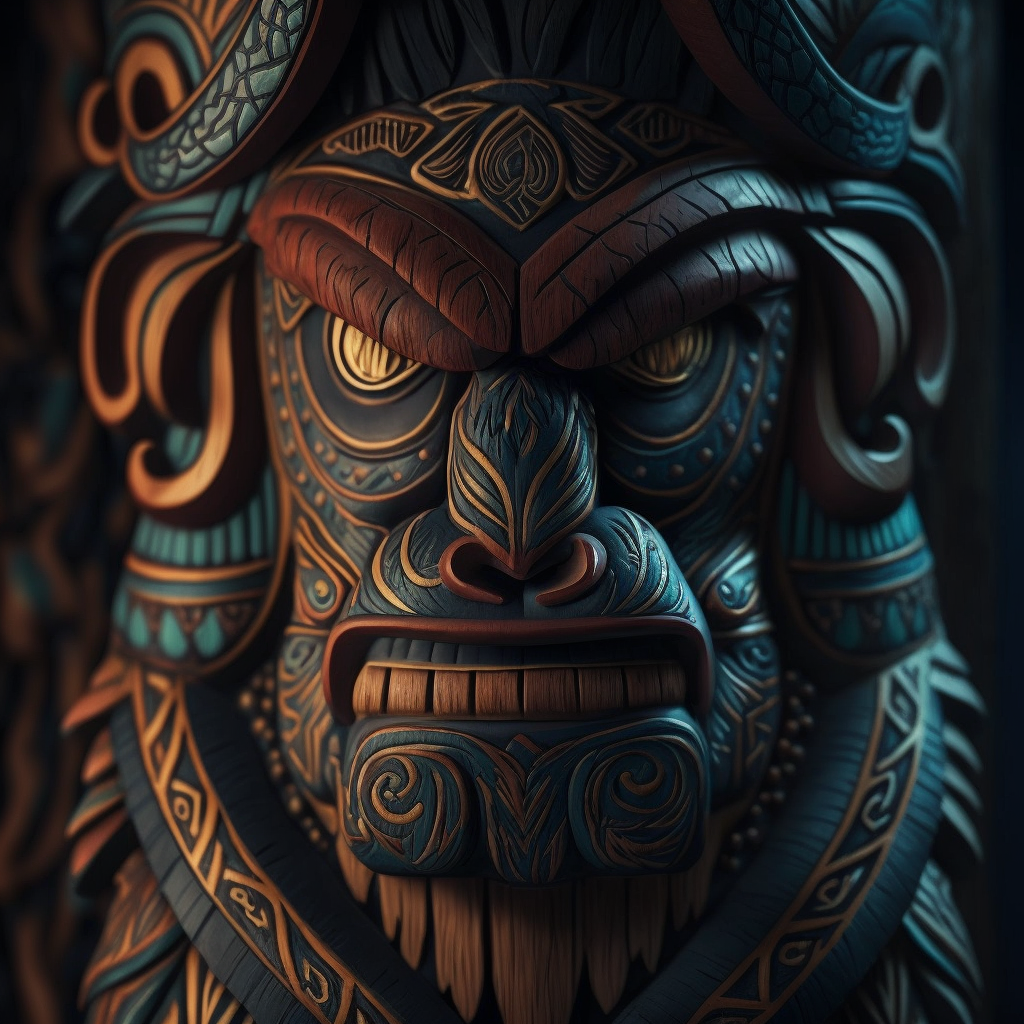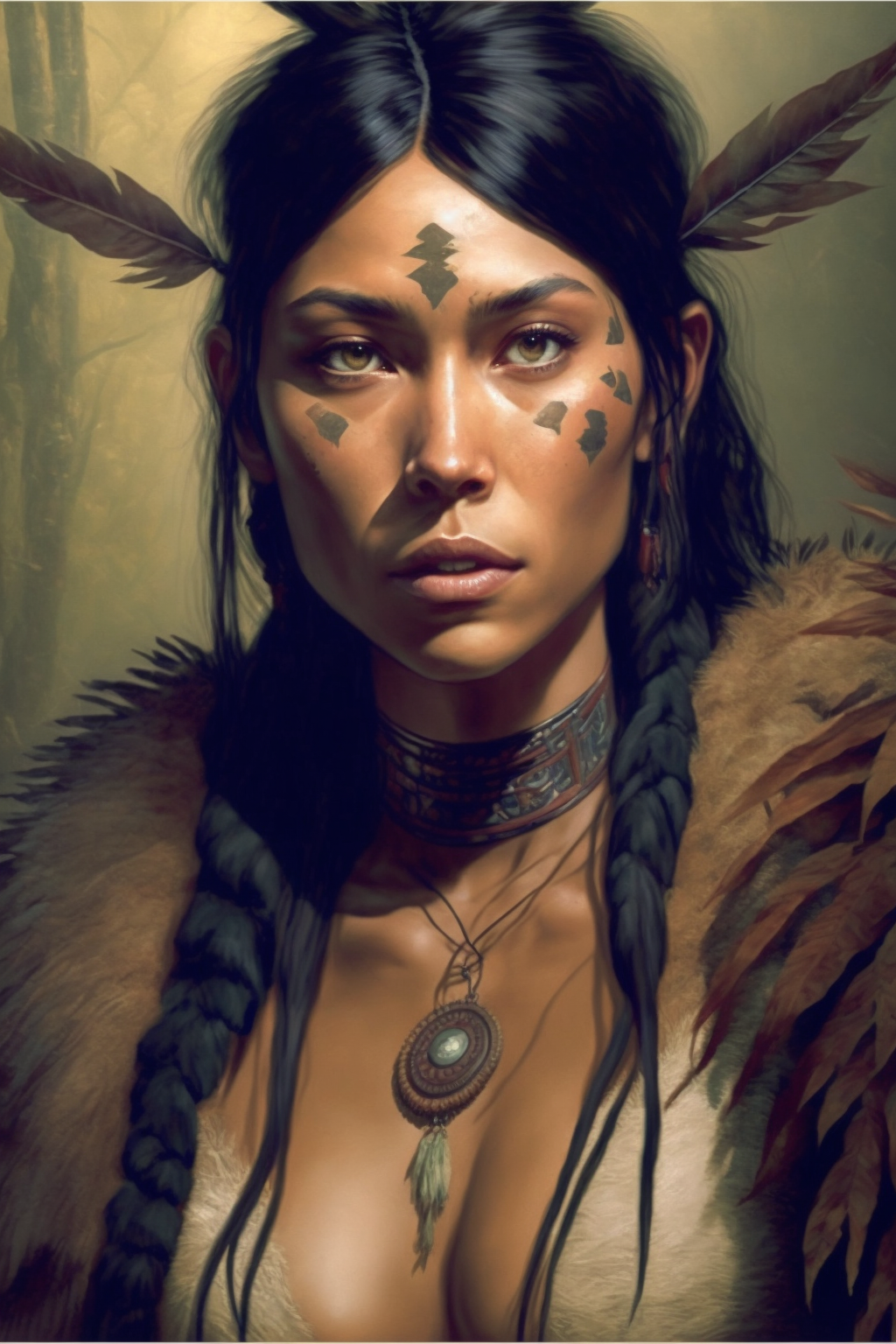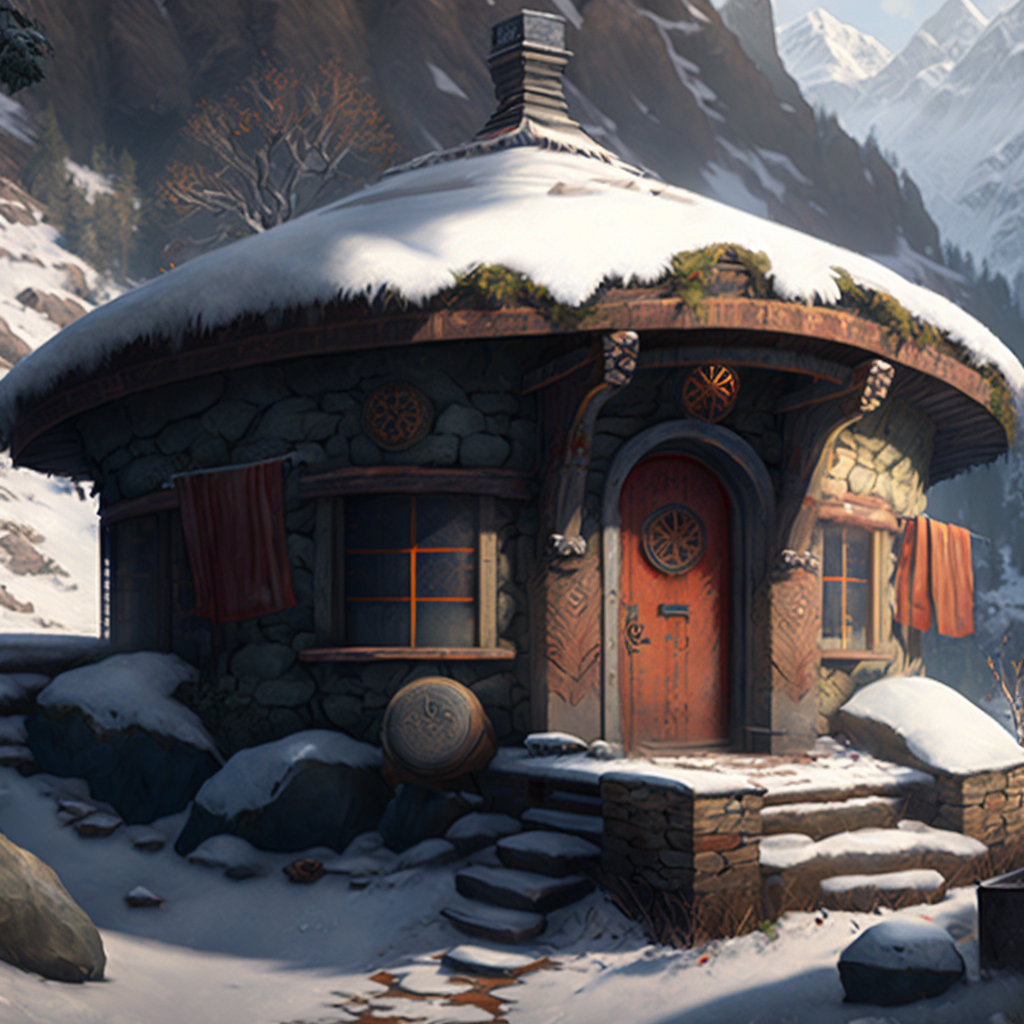Osomahtin
Inhabiting a unique locale and position within the overall confedertain of The People of Two Seasons , the Osomahtin are often viewed as odd, even among their own people. While they remain loyal and prevalent in their contributions to Sahahimu society, their isolation and independence in their mountainous homes on the island of Sanctuary keeps their ways contained and secreted within their homes, and if one were to ask on of the tribespeople about this, they would likely laugh and tell you that this is just the way they like it. Not to be mistaken for ambivalence however, this good natured but distant aloofness is merely one of the diverse trappings of their culture, and plays a role within their way of life.
Structure
The tribal structure of the Osomahtin is a rigid one consisting of a well defined order of respect and authority within their culture. Unlike the other tribes of the Sahahimu, the internal day to day aspects of life is heavily influenced by their Singer of the Last Breath , which for them is a position of not only high honor, but of authority as well. The Singer is the spiritual leader of the tribe and acts as a mediator between the tribe and the spiritual world. They are responsible for communicating with the monkey spirits, past present, and future, and interpreting their messages for the tribe. This information is then a matter of private discussion with the Chieftain, who remains the political leader of the tribe and is responsible for making decisions that affect the tribe as a whole. They work closely with the Shaman to ensure that the tribe's spiritual and physical needs are met. From here, a small group of elders plays a role as advisors to both, keeping a grounded perspective and an often opposing voice that represents the common people and their needs, insuring that no individual or group of individuals is ever marginalized.
From here their society is broken down into the roles they serve within their community, which is delineated into four groups:
- Dmag Mi - The warrior caste. These members of the tribe are chosen to protect the tribe from outside threats. They have trained extensively with their monkey companions to become innovative and highly effective scouts and guardians of the mountain upon which they live, safeguarding the southern shores of the Island from a multitude of well obscured observation posts along the ridges and slopes upon which they reside. They are viewed as highly respected servants of their people, and are dedicated to their safekeeping.
- Pradāyaka - The caste of the providers. This group encompasses the hunters and gatherers of the tribe, and in both cases work in tandem with their animal companions to increase the effectiveness of their task immensely. While resources in the mountainous regions are nowhere near as bountiful as those found below, the Osomahtin never seem to do without, largely in part due to these individuals making great efforts to tirelessly keep stores filled while still maintaining a sustainable rotation around the mountains, never overextending by taking more than their mountains are willing to provide before moving on to the next site.
- Nirmātā - The craftspeople of the Osomahtin are some of the most culturally treasured members of their tribe, placing a high level of endearing respect for those that keep their homes and hearths filled with the wares and products needed to maintain life in a location that can, at times be quite harsh. They are masters that ply their crafts and educators as well, always working to pass their skills and methods on to the next generation, while at the same time taking special precautions not to let them rely too much on tradition, preferring a student show attempts at innovation and a willingness to explore their craft beyond the boundaries of mere practicality.
- Dhērai priya - These are the common folk of their tribe, and above all other, the most valued, the name of their caste literally translating in their native dialect as the "Many Beloved". It is for this caste that all the others toil without complaint and with reinforced purpose. Within this caste are not only the general laborers and families, but the artisans and musicians as well, who are extremely valued as the spiritual voices and internal eyes of the tribal spirit, able to channel the "Ātmākō gīta", or perspective of the spirit of the tribe into a message that can be shared with the physical ears of the rest of the people in a way that can be understood.
Culture
The Osomahtin have a rich spiritual tradition that revolves around their bond with the monkey spirits. They have elaborate ceremonies and rituals that are performed to honor these spirits, and the Singer of the Last Breath plays an important role in facilitating these practices, mediating not only the spirits of the living members of their people, but those who have yet to be reborn, and those that have been lost as well. They also have a rich artistic tradition, with music and dance playing an important role in their culture. They have many traditional instruments that are used to create music that reflects their connection to nature and their spiritual beliefs such as metal drums and horns, pipes and flutes, and a hammered string instrument. The tones and rhythms they create are loud and full of energy. They also have many traditional forms of visual art, such as painting, sculpting, and carving, that depict not only their spiritual observations and beliefs, but the celebrated freedom of their artisans allows them to express a multitude of concepts and ideals as well far beyond their beliefs and views.
The Osomahtin have a strong sense of community and family, one that directly incorporates their animal companions. They value cooperation and collaboration very highly, with each member contributing to the well-being of the tribe. Not following this tradition is viewed as a sign that an individual is troubled or hurt, and will usually result in that individual being brought through a series of short interactions with their neighbors where they will be fed and reminded of all the good they have done for the tribe in the past as a means of reminding them of their importance and relevance to society, and as a tangible display of the lives their works have touched. They also have traditional forms of social organization, such as extended families or clans, that play an important role in their society.
The tribe has a cuisine that reflects their location with a focus on hearty, warming foods that are well-suited to the colder climate. They also have a number traditional cooking methods and ingredients that have been passed down through generations, with most families and clans holding several secret recipes, not as a matter of pride, but as a means to entice visitation from nearby neighbors and extended family, as they can only get those specific dishes in one place.
History
The Osomahtin, even before the separation of the tribes, were always more apt to march to the beat of their own drums, preferring the higher altitudes and colder weather that persists there to the humid forests and arid northern plains of Sanctuary. When the separation did occur, they were fairly ambivalent about it initially, and quite content to retire to their mountains and make their claim there. They remained in isolation for a very long time before returning to the forests to trade and receive news, but once it had happened the first time, the visits became more regular.
When the troubles with the Bonedancers arose, the Osomahtin were held in reserve, but as the fighting stretched on a large number of them were called forward to defend the northern shores. Their unique martial prowess earned them a great deal of respect as the training of the Dmag Mi was viewed in action for the first time, moving with incredible speed and agility like a dance with their animal companions to create a fluid and graceful line of unbreakable force with most of the carrying little more than staves and spears.
Despite being viewed as different, they are respected and held in high regard.
Territories
The southern peninsula of Sanctuary is dominated by a small but looming mountain range, with the peaks locked in a permanent freeze, one that has gotten substantially colder since the Blight. Nestled among these peaks and valleys are the settlements of the Osomahtin. The mountains are carved here and there with steep and treacherous paths and steps that allow them to navigate through the mountains, for they have grown so accustomed to the climate that travel is of little consequence as long as the weather does not turn.
Military
The Dmag Mi have a deep spiritual bond with their monkey companion, and work closely with them in battle with the monkey helping the warrior scout the area, locate enemies, or distract them during battle. They are skilled in guerrilla warfare tactics, such as ambushes and hit-and-run attacks, that take advantage of their knowledge of the local terrain and their ability to move quickly and quietly. The warriors of the Osomahtin use many traditional and non traditional weapons that reflect their cultural identity and practical needs. They include bows, spears, staves, or large angled knives that are made from materials found in their environment, but in some cases prefer to rely on their own martial prowess. They are masters of hand to hand combat as well and have developed many unique methods of self defense. One of the more dangerous and unorthodox tactics employed by the Dmag Mi is the creative and deadly use of fire in innovative ways, either as a manipulation of the environment, or as a direct weapon in and of itself. Their mountainous and snow covered homes allowing them to utilize the full potential of the elements without the need for worry about the natural world suffering because of it.
The Dmag Mi are expected to be courageous and loyal to their tribe and their cause without exception. They must be willing to make sacrifices for the good of their community and see their role in battle as a spiritual calling. While they are considered servants among the community, it is a matter of respect and pride for them to be called to such a path as they believe there is not greater honor.
Technological Level
The Osomahtin have a deep understanding of the medicinal properties of the plants and herbs that grow in their environment. They have developed remedies for common illnesses and injuries that are specific to their region such as hypothermia, frostbite, as well as tending to fractures and the occasional burn. They have also developed sustainable agriculture and farming practices that allow them to forage and utilize small scale horticulture, and to hunt within the mountains in a way that is environmentally friendly and preserves the natural resources of their environment.
The tribe has a deep understanding of the stars and their movements, and use this knowledge to navigate and plan their lives utilizing a sophisticated understanding of astrology.
Agriculture & Industry
The Osomahtin make textiles from wool or silk, pottery from clay, or woodwork from local trees. They also practice metalworking, creating tools and weapons from locally sourced materials such as iron, copper, or bronze. Their metalwork is skillful and elegant, and they remain one of the few tribes that utilize the art, keeping their skill and wares in high demand.
Trade & Transport
The Osomahtin engage in trade with other tribes in the region, exchanging goods and resources that are unique to their culture, such as textiles, pottery, and metalwork for goods such as salt, spices, and tea.
Infrastructure
The Osomahtin use local materials such as stone, wood, and clay to construct their houses, and also use animal skins or fur to cover the roofs and insulate the walls against the harsh climate. They are designed to withstand the harsh weather and be well-suited to their mountainous terrain. They are built to be low and compact, with flat or sloping roofs to shed snow and water. The houses also have large windows or skylights to let in natural light and provide views of the surrounding landscape.
The Osomahtin decorate their houses with intricate carvings or paintings that reflect their spiritual beliefs and cultural identity, and use colorful fabrics, pottery, or metalwork to adorn the interior and exterior of their homes. They are designed to promote community living and to provide a space for spiritual practices, and to this end, many communities have a central courtyard where tribe members gather for meals or ceremonies, with individual living spaces branching off from the central area.

Founding Date
2800 AR
Type
Geopolitical, Tribe
Capital
Demonym
Sahahimu
Leader
Ruling Organization
Leader Title
Head of State
Government System
Tribalism
Power Structure
Confederation
Economic System
Barter system
Official State Religion
Parent Organization
Location
Related Species






Comments